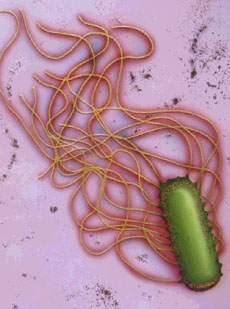FOOD 101: How To Avoid Salmonella & Other Food Poisoning
|
People tend to worry about food poisoning during the summer months, when eating outdoors exposes food to greater bacterial growth from the heat. But you can get food poisoning year round, including in your own kitchen.
The Partnership for Food Safety Education helps consumers get the facts, deflating common myths about cross-contamination and the growth of harmful pathogens that cause food poisoning. Here are their myth busters for 2014: Myth 1: It’s O.K. to wash bagged greens if I want to. It’s even better for them. Fact: While intuition says that giving ready to eat, washed or triple washed salad couldn’t possibly hurt, the truth is otherwise. An extra rinse will not enhance safety, but could potentially lead to cross-contamination from pathogens that could be on your hands or on kitchen surfaces. Ready-to-eat greens are just that: ready! Fact: Some bacteria can survive cold environments like the fridge. In fact, Listeria monocytogenes grows at temperatures as low as 35.6°F. A recent study from NSF International reveals that the refrigerator produce compartment is one of the germiest place in the kitchen, containing salmonella and listeria bacteria. |
Don’t rinse raw chicken before cooking it. Salmonella can contaminate other items in the sink. Photo courtesy Chicken.ie. |
|
|
To reduce the risk of cross-contamination, clean the bins regularly with hot soap and water; clean the other surfaces of the fridge likewise, including the walls and undersides of shelves; and clean up any food and beverage skills immediately. Be sure to keep fresh produce separate from raw meat, poultry, seafood and eggs. |
||
 Not fun: the salmonella bacterium. Photo courtesy Kosmix.co. |
Myth 3: It’s only important to rinse fresh fruits and vegetables for safety. I don’t need to dry them too.
Fact: Using a clean cloth or paper towel to blot dry fruits and vegetables after rinsing is more important than you might realize. Research has found that taking a minute to dry the produce reduces the level harmful bacteria that can remain on the surface.
Myth 4: I don’t need to rinse this melon for safety, since the part I eat is on the inside. |
|
|
FOOD SAFETY TRIVIA
|
||



